This morning the very last Australian-built Ford Falcon rolled of the production line. Bruce Newton recently spoke to some loyal long-term Ford employees about what the Blue Oval has meant to them and what the future holds.
And just like that, Brian Makin’s face crumples.
His cheeks redden, his eyes become glassy and he brings his hands to his face, embarrassed to be brought near to tears by my question.
Makin is a Ford lifer. He’s spent nearly 42 years doing his best for the Blue Oval in Australia in a variety of roles that started with an apprenticeship when he was just 17 years old.
But when he finishes with Ford, so too Ford finishes as a manufacturer in Australia.
“How does that make you feel?” I’d asked.
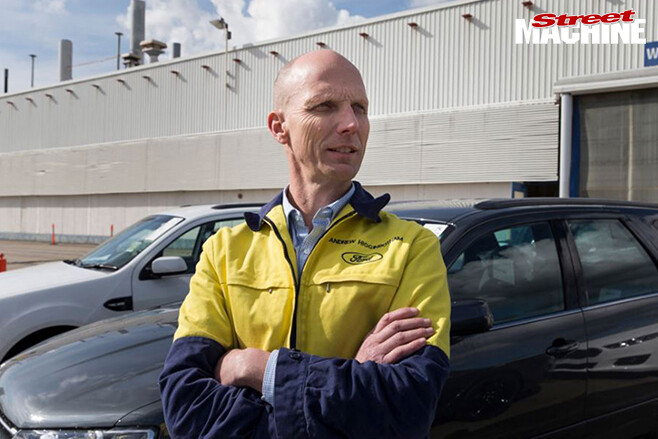 “Really bad. Yeah, I uh…” he’d started to reply. And then the emotion had overwhelmed him. “I get a bit choked up,” he’d muttered, as he took a moment to compose himself.
“Really bad. Yeah, I uh…” he’d started to reply. And then the emotion had overwhelmed him. “I get a bit choked up,” he’d muttered, as he took a moment to compose himself.
“The thing that concerns me is that, yes, [some] people are transferring to other areas of Ford and they’ll be successful; Ford always looks after people, trains them well and nurtures them well.
“But obviously other people will leave Ford and my concern is their welfare and their opportunities for employment in the district or elsewhere.
“I just know the impact of Ford and manufacturing has had on this country; it will leave a big hole.”
Nowadays Makin has a long title that essentially means he is one of the most senior blokes at Ford’s Geelong manufacturing site. He joined in 1975; he is now 59. Before him, his father started at Ford Australia in 1941.
Our interview, arranged by Ford Australia, had started with Makin upbeat, a happy bear of a bloke, well-dressed and cheerfully clasping my hand in a solid handshake, a gold watch presented for 25 years of service on his wrist.
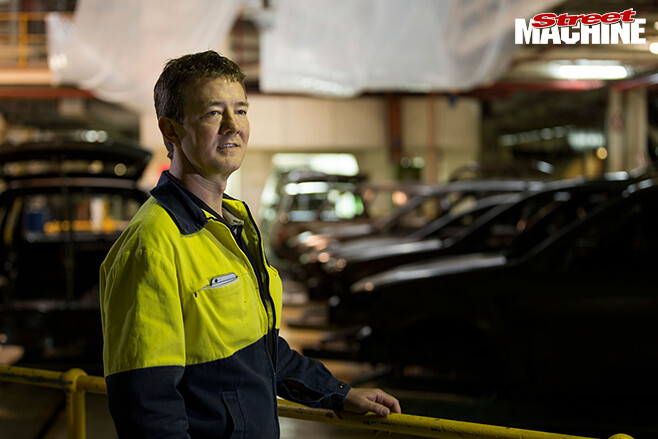 It wasn’t a facade that had eventually crumbled. It was something much more palpable, worthy and structural to his being; a painful reminder that so much he had worked for, so much he had loved, would not be there anymore after October.
It wasn’t a facade that had eventually crumbled. It was something much more palpable, worthy and structural to his being; a painful reminder that so much he had worked for, so much he had loved, would not be there anymore after October.
The giant presses will cease stamping those beautiful single-piece bodysides. The blocks for the in-line six-cylinder engine will no longer be cast. No more trucks will arrive to ship the parts up the highway to Broadmeadows for assembly as they have done for 56 years.
And then the last Falcon will come down the assembly line and then – nothing. Except memories.
Twelve months from now it won’t only be Ford departing either, as Holden and Toyota close their plants and the automotive manufacturing industry as we know it in Australia ceases to exist.
“The thing that I personally see is the opportunities presented to people as a result of being involved in manufacturing right though from designing, finance, purchasing to sales and marketing are no longer going to be there,” Makin reflects. “I’ve enjoyed those opportunities and so have many, many other people.
“The thing that strikes me about Ford ceasing, Holden ceasing and Toyota ceasing, is that the skills we have as a country are going to diminish and that leaves a big hole for me, because as a country, we’re going to reduce our capabilities.”
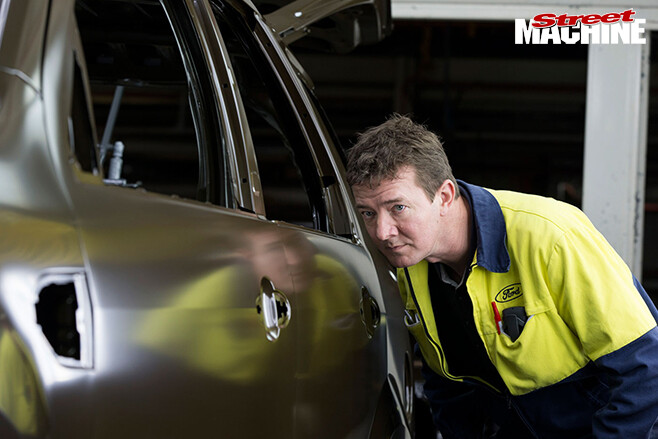 Makin’s anguish is so easy to understand. As a Geelong boy born and bred, he knows the Ford factories have stood on the Melbourne road in the city’s east since early last century, sturdy evidence of Ford’s power and prestige and Geelong’s vitality as an industrial hub and employer. This was the first home of Ford Australia and where it built its first cars locally.
Makin’s anguish is so easy to understand. As a Geelong boy born and bred, he knows the Ford factories have stood on the Melbourne road in the city’s east since early last century, sturdy evidence of Ford’s power and prestige and Geelong’s vitality as an industrial hub and employer. This was the first home of Ford Australia and where it built its first cars locally.
A group of photos stuck on the site’s security hut wall show the original plant alone in a field, with Geelong Grammar off in the distance one way and Corio Bay in the other. Now it is pressed in on all sides and eventually it will be eaten up. Just as the old product development centre across the road became a Bunnings, and up the hill towards town, Plant 5 is now a carpet factory.
Graffiti daubs the redbrick walls, while the billboard that once proudly promoted the latest Falcon, Fairlane or LTD in all its 24-sheet glory is now a derelict wooden frame with weeds growing all around. A few people stroll around in yellow high-vis vests, but there is none of the urgency that energised this place as recently as the noughties when BA, BF and FG Falcon sales were still strong and Territory was proving a critical and commercial success.
Inside the office building where we meet there are rows of empty cubicles and ample evidence of an era now gone. There are posters of racing Falcons winning at Bathurst. Now Ford doesn’t even sponsor a team.
“I remember all this office area being full of people. But with technology and reduced volumes, things have changed,” Makin muses. “I’ve got no idea how many people have been employed on this site or overall by Ford Australia. Hundreds of thousands? They are people who may have worked here for a month and some for 40 years.
“I look back at this site and this building was built 15 years before the Second World War and there were activities done here to support the war effort. Then after the war the decisions were made to build the Falcon and this plant being a stamping plant, iron casting, machinery and assembly operation.
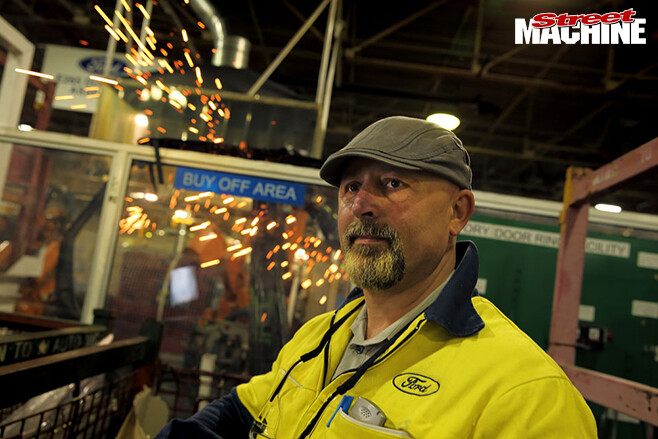 “It’s an incredible journey and it’s just supported so many lives along that journey.”
“It’s an incredible journey and it’s just supported so many lives along that journey.”
Among them is Nick De Giorgio, whose father worked at Ford in Geelong before him and then took his son in for an interview in 1989, five years after he’d retired. Nick got the job as a press operator the next day.
“When I started I think there were 5000 people at the Geelong plant,” he remembers. “I met a lot of people, there were a lot of good times.”
In a 25-year career he rose through the ranks in the stamping plant to become a team leader. He says the place was buzzing at its height; a heaving mass of characters and cultures from all over the world, which all left their impact on him.
“You’d meet a lot of people from different nationalities. You’d learn more about people there than you did anywhere else [in terms of] their cultures and all that. You’d teach them something and they’d teach you a lot of things.”
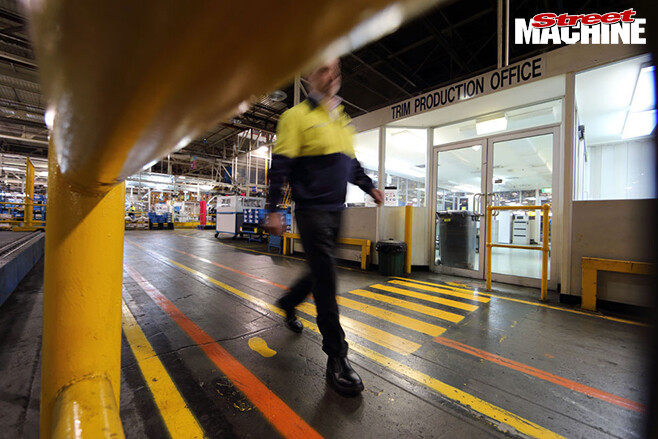 De Giorgio says the workforce remained positive about the future despite the various swells and sways over the years. He remembers regular staff meetings with Geoff Polites, the dynamic leader of Ford Australia from 1999 to 2004, for their directness and honesty.
De Giorgio says the workforce remained positive about the future despite the various swells and sways over the years. He remembers regular staff meetings with Geoff Polites, the dynamic leader of Ford Australia from 1999 to 2004, for their directness and honesty.
“We didn’t think it [closure] was going to happen though. We just thought it was going to keep going and going and going. We heard all the rumours but they never seemed to come true,” he says.
But he changed his mind when he met Bob Graziano, the American who arrived to become president of Ford Australia in 2010. “The first impressions we got from the way he spoke to us just made us think he’d come to shut us down,” De Giorgio says.
Of course, whether that is true or not is something only a few people in the higher reaches of Ford could know. But De Giorgio doesn’t hold that against the company. Married with two young kids, he took a package and left in 2015 to start up his own courier business, grateful for the long notice Ford gave and the support it handed out to its employees.
“All the help we needed, they gave it to us and I just utilised it to my advantage,” De Giorgio says. “They probably offered more support than they should have done and they did it for everyone.”
Luke McSeveny has also moved on, but in a very different direction to De Giorgio. After nine years at Ford as an engineer, he left in 2014, only months after the closure plan was announced, to begin a Masters of Divinity. Although he is originally from Sydney, he wants to return to Geelong when he graduates as a pastor of the Presbyterian Church in 2018.
He has no doubt his Christian faith helped him face the future with confidence and also allowed him to extend a helping hand to those around him as the reality of the closure impacted. “I am strongly persuaded that life is more than what we see and feel, so when these tensions and strains came up I could look forward and look above,” the 33-year-old says. “Some people were quite anxious and worried and stressed and certainly I tried to encourage people based on the convictions I have; a belief that life was more than a job and that human relationships and people are a lot more value than bits of metal and a paycheck.”
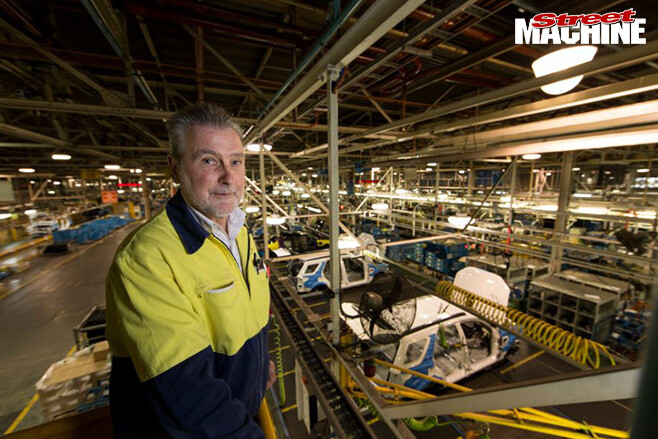 McSeveny’s new career is a dramatic change for a bloke who says his career highlight was being part of the team responsible for reinstalling the V8 engine line at Geelong after the purchase of Ford Performance Vehicles in 2012, some 30 years after the last V8s were built there.
McSeveny’s new career is a dramatic change for a bloke who says his career highlight was being part of the team responsible for reinstalling the V8 engine line at Geelong after the purchase of Ford Performance Vehicles in 2012, some 30 years after the last V8s were built there.
“That was beautiful,” he smiles. “We had to create a quality control system using nothing we had ever done previously, because everything else before was high-cost and [required] mechanical interlocking protection to avoid errors.
“We went from that to this one guy just building his own engine on a trolley.
“We developed this iPad interface so every guy got an iPad and they went through taking a couple of hundred photos of every engine in the build process and had to tick off every control.
“Towards the end we could really stretch what was normal to be able to make it work. That was fun; building a V8 is one of the nicer jobs. I’ve got one out there with my signature on it.”
That emphasis on quality and innovation is something Boris Zaroje understands. He joined the workforce at the Broadmeadows assembly plant in the body shop in 1976. Through a variety of roles he has been focused on the improvement of vehicle assembly ever since.
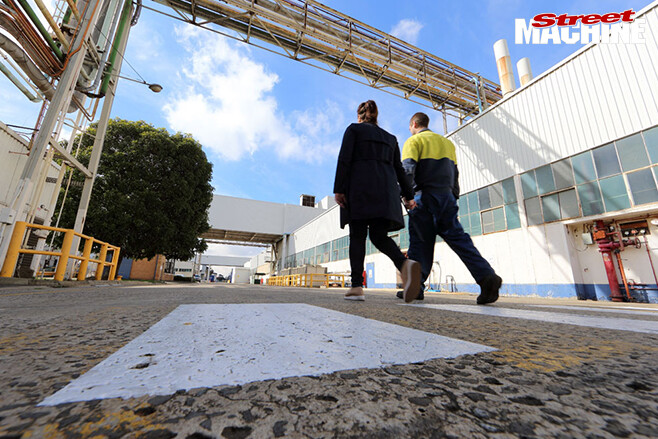 ‘Broady’ looks to have changed little since the first XK Falcons rolled out in 1960. A series of low, flat, white buildings stretch across an often windswept plain, bounded by the Hume Highway to the east and a railway line to the west. Hundreds of gleaming Falcons and Territorys sit waiting for transportation to dealerships and their owners.
‘Broady’ looks to have changed little since the first XK Falcons rolled out in 1960. A series of low, flat, white buildings stretch across an often windswept plain, bounded by the Hume Highway to the east and a railway line to the west. Hundreds of gleaming Falcons and Territorys sit waiting for transportation to dealerships and their owners.
Zaroje knows the building internals have been modified, upgraded many times as the local management and the workforce strived for improvement, relevance and survival.
“There were 700 payroll people physically building cars in the body shop in 1976,” he recalls. “It was very old school when I joined, manual conveyors pulling everything. And there were these things called roundabouts, which were around three to four metres in length and three metres in width with the tooling on the top. They used to circulate with the weld guns all suspended overhead and you physically had to jump on top of the drawn cart, spot weld and so forth and jump off.
“It was absolutely amazing. You had no control over the facility; the facility controlled absolutely everything. And it was quite dirty and quite dark.”
But the balance changed as the thoughts, belief and knowledge of the line-workers were incorporated into the process.
“If you want to know something, you have to go to the source,” says Zaroje. “If someone is on a weld gun, or if someone is on a metal finish task making sure the skin quality is good, there is nothing better than getting the input of the man who looks after it.”
“You would not recognise the place now,” he says proudly. “All your merry-go-round type fixtures are done away with, all the lines are fully automated, people don’t have to jump on any carriers.
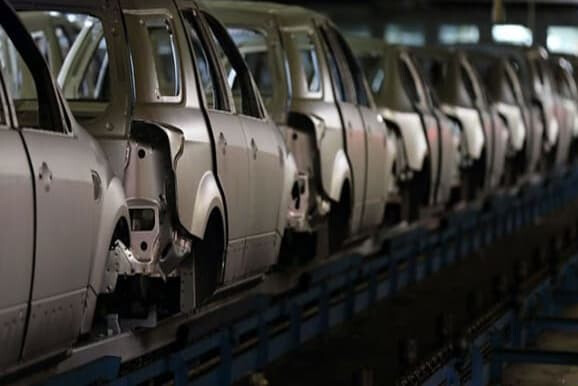 “It’s well lit, the noise has been taken away, it’s safe and clean.”
“It’s well lit, the noise has been taken away, it’s safe and clean.”
And it’s over, something Zaroje is philosophical about. He came to Broadmeadows with his family from Croatia when he was 13, and has worked almost all his adult life for Ford. He’s married, has kids and grankids, a home up the road in Craigieburn and now a caravan which will be towed around Australia – behind a Ford Ranger, naturally.
“On 7 October, I’ll exceed 40 years and four months working at Ford,” he says. “I leave on 14 October; that’s the agreed date. If I look at the 40 years of service, that in itself is a milestone. If I look at what Ford means to me, it is a whole lot. If I wasn’t loyal, if I didn’t think much of the product, I wouldn’t be here. It’s that simple.
“Have I learned a lot? Yes. Has Ford provided the ability to learn; the stepping stones for the progressions? The answer is yes. Everything I have, I’d suggest to you I have Ford to thank for. I can’t deny that. You have to look at the positives.
“Will I continue to love Ford? Yes. After 40 years it becomes part of you, whether you like it or not.”
Love of Ford is something Suzanne McConchie never had a choice in. In her family there are two brands of car: Ford and Junk. She is one generation of a Ford family that bleeds blue and has known little else except working for Ford at Broadmeadows. Her two-year old nephew has already been coached in that – just as she was when she was a toddler.
Her grandfather worked at Broadmeadows for 25 years, her father for six months and her brother for six years. She met her husband Patrick at Ford because he also worked there. He still does; as does Patrick’s brother.
McConchie bought her 1970 XW Falcon with a former boyfriend who also worked at Ford, and they restored it together.
“There’s a photo of me when I’m just walking and I have a Ford visor on that says ‘Telstar Car of the Year’. I’m at the Melbourne motor show holding my grandfather’s hand,” she recalls. An engineer and former member of Ford’s graduate program, McConchie joined the blue oval 13 years ago.
And like Brian Makin, she has shed her tears. The day – May 23, 2013 – when Graziano called the Broadmeadows assembly plant workforce together in the staff canteen to tell them manufacturing would end in three years’ time, she couldn’t hold back.
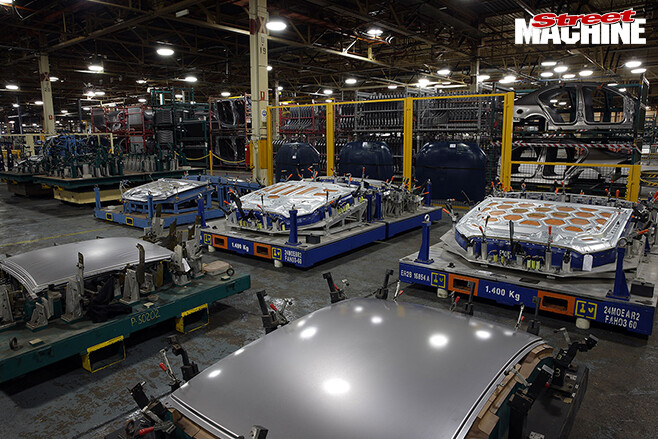 “On that day I cried a lot,” she recalls with a small smile and almost embarrassed laugh. “I think the first reason that happened was I realised I wasn’t going to achieve my goal of being the first female plant manager, because that job was no longer going to exist.
“On that day I cried a lot,” she recalls with a small smile and almost embarrassed laugh. “I think the first reason that happened was I realised I wasn’t going to achieve my goal of being the first female plant manager, because that job was no longer going to exist.
“My plan for the next 10 years was gone. I was like: ‘What am I going to do now and what are all these people going to do now?’”
Understandably, considering her deep ties, she talks of the Broadmeadows workers as her extended family. There are so many long-term employees on the line and in the offices that she knows well.
“It’s really like a family. I know that sounds clichéd but I would know 80 per cent of the people’s names,” she says. “I actually avoid coming down here [to the plant] too often because I can’t walk from one side to the other without hugging 50 people.”
But over time many of the familiar faces have disappeared as the wind-down has got underway and people have accepted redundancy packages and departed.
“I’ve often wondered about the first Monday after they leave; they have been coming here for 25 or 30 years and they wake up and don’t come in. I wonder what they think about sitting at home going: ‘I don’t go there today.’ And more than likely you won’t see them ever again.”
Now Suzanne and Patrick are having their first child and he or she will be born into the Ford ways too, as both parents are amongst the 160 staff to move from manufacturing to Ford Asia-Pacific Engineering.
This is very much the silver lining in the dark cloud that is the closure of Ford’s Australian manufacturing operations. Come 2018, Ford will be Australia’s biggest automotive employer, with 1100 design and engineering employees spread across Geelong, the You Yangs testing ground and at Broadmeadows, where the old HQ building is currently being converted to office space for the product development team.
“In July 2014 I got a job in product development,” McConchie recounts. “I’d worked for 11 years in manufacturing, but I really wanted to work in design.
“But I wouldn’t change it; I learned so much about how to build a car. I’ve worked in sheet metal, I’ve worked in trim, I’ve worked in final, I’ve worked in quality, I’ve worked in product logistics. So now I’m moving into product development with much more knowledge of how a car is built versus those who have only ever done it virtually on a computer.”
As much as her new future excites her, McConchie is conscious of the closure that has to be dealt with first. Her baby is due the week before, so she probably won’t be there to watch the final Falcon be completed.
“I kind of feel relief that I won’t be here,” she admits. “There has to be a last car – then the emptiness.
“That’s just weird.”
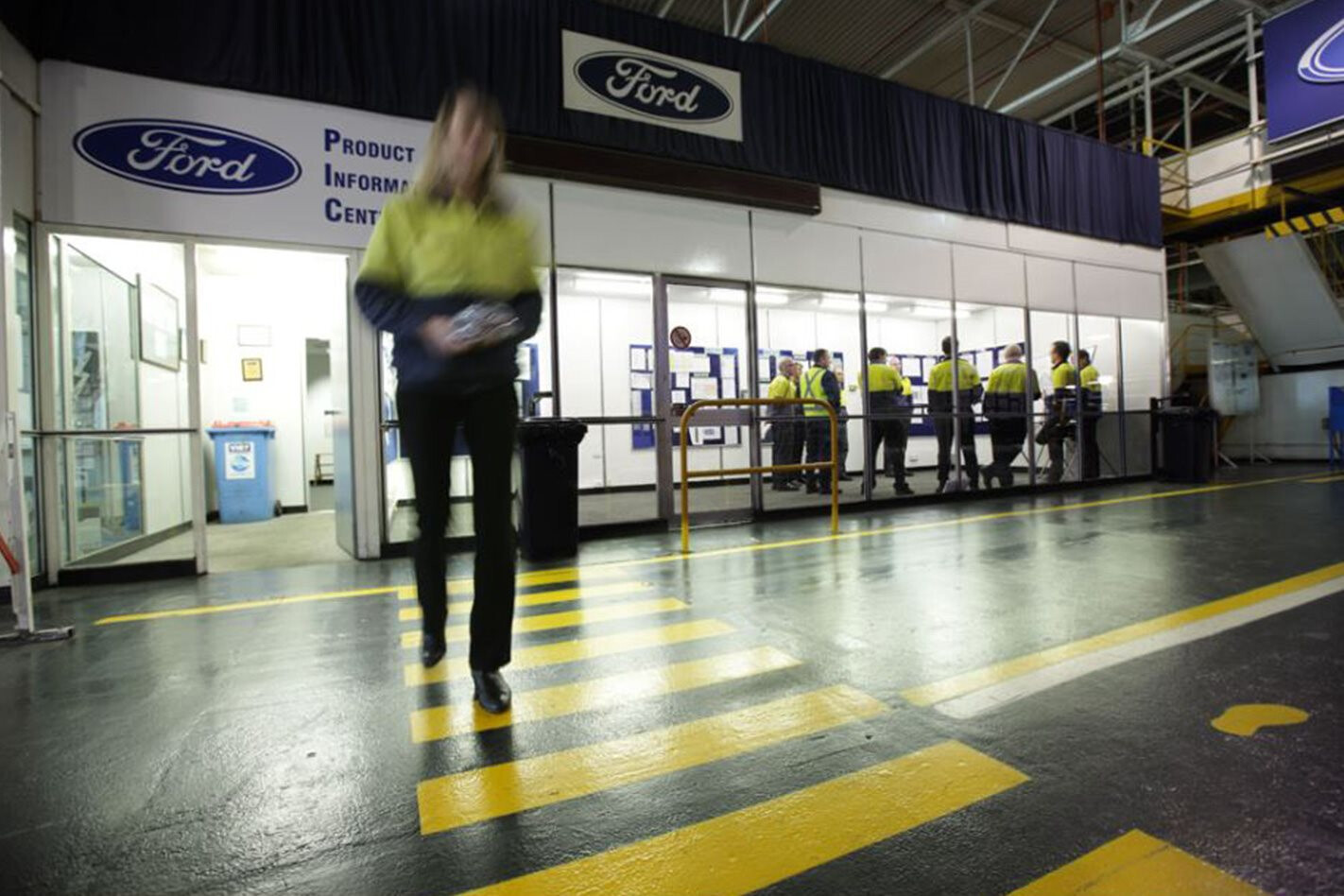
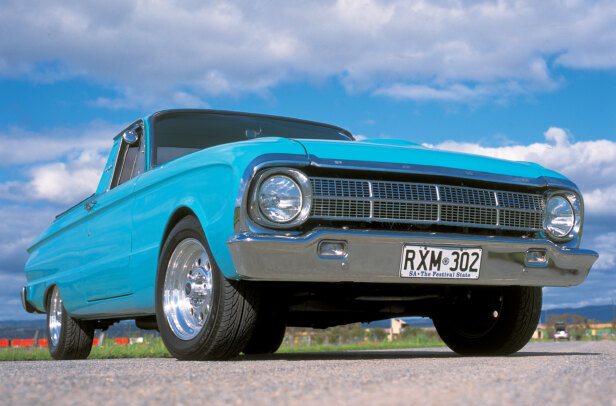
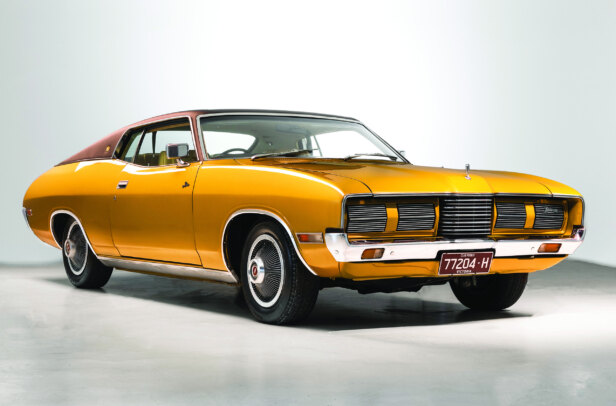
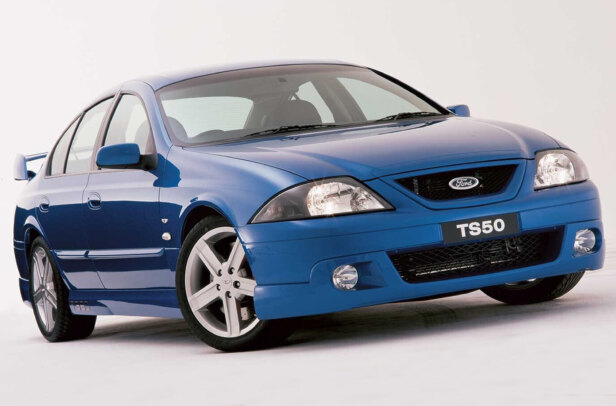
Comments